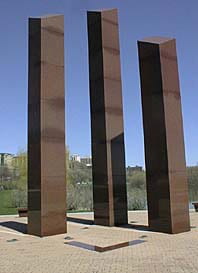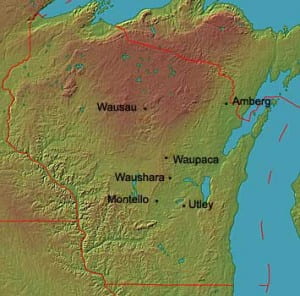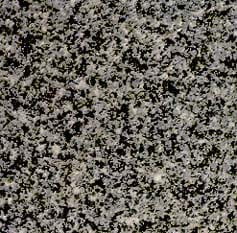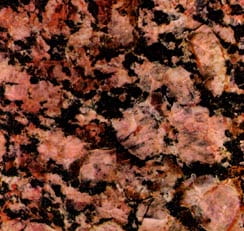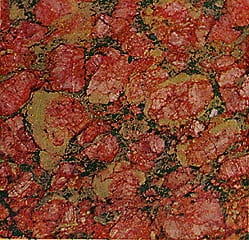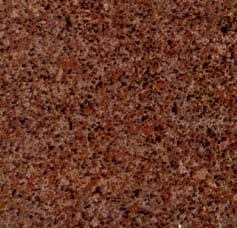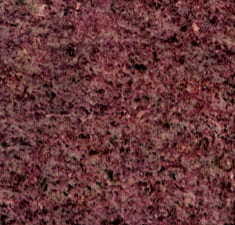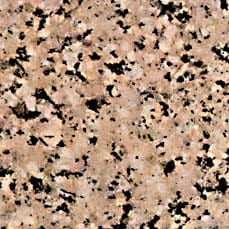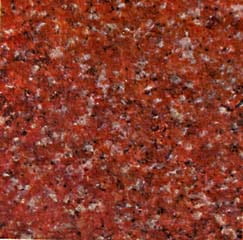WISCONSIN – TAKE IT FOR GRANITE
VIETNAM WAR MEMORIAL, MILWAUKEE
Made from Wisconsin Granite
In 1898 Ernest R. Buckley published a 544 page volume for the Wisconsin Geological and Natural History Survey, titled “On the Building and Ornamental Stones of Wisconsin”. It documents a fledgling but important industry of Wisconsin…. building stones. The report includes discussions of the Lake Superior Sandstones and a number of the paleozoic limestones. However, the most extensive part of the report relates to the many granites that were quarried in the state. Some of these are still being produced, but in limited amounts. The materials for this web page are taken mostly from Buckley’s report. It is a class project for a freshman seminar course titled “Wisconsin’s Geologic and Mineral Heritage”. We hope you enjoy this aspect of Wisconsin’s Mineral Heritage.
Each of the following links on the State map will take you to a different grante type and location.
The Granite Ages
Wisconsin’s Granite terrains were produced primarily in three ages representing different tectonic activities. The far north granites that come from the Wisconsin-Michigan border were the result of subduction tectonics around 1850 Million Years ago. A second phase of granites were introduced around 1760 Million years ago. These are centered in the Fox River Valley area, and result from anorogenic activity, perhaps as a final phase of the tectonic events that started in 1850 Ma. The last granites to intrude the state are those associated with the Wolf River Batholith which is dated about 1450 Ma. Each of these granites are distinct. More information about the geology of the Lake Superior region can be found in a book by the same name authored By Dr Gene Le Berge(1996)
Montello Granite
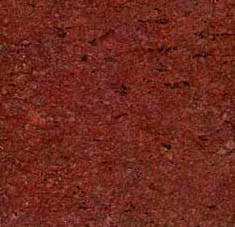 The Montello Granite which is found in mounds located in Marquette County, is dated at about 1760 million years. It is named after the city of Montello, which has an old quarry as part of a downtown park. The Montello Granite is a dense, fine grained rock uniform throughout the quarry. Over one half of the rock is composed of feldspar, while more than four-fifths of the remainder is quartz. The little bit that is left is composed of magnetite, hematite, chlorite, hornblende, and muscovite. This mineral composition is what gives the Montello Granite such great strength and durability. The Montello Granite has a red color, but two variations. One shade of red is a bright cherry red while the other is more of a grayish red. Along the joints you will find the granite stained with a yellowish-brown iron oxide, along with some black and white streaks mixed in, in different directions. These dark streaks are a result of the greenstone magma, and the white streaks are small veins of secondary quartz. These veins, when present, make the uniformity of color which is one of the most important qualities of monumental stone. The Montello Granite also has strength and durability, which is important for monumental stone, but it also makes it hard to quarry and polish. You will find it used in cemeteries of Illinois, Indiana, Ohio, Pennsylvania, Michigan, Iowa, and Wisconsin. Montello Granites have been used for national monuments such as the General Custer Monument, monuments to Wisconsin Soldiers at Gettysburg, Pennsylvania and Chickamauga, Tennessee, and the sarcophagi for General and Mrs. U.S. Grant at Riverside Park, New York. Montello Granite is also found in many important buildings such as the Herald building in Chicago.
The Montello Granite which is found in mounds located in Marquette County, is dated at about 1760 million years. It is named after the city of Montello, which has an old quarry as part of a downtown park. The Montello Granite is a dense, fine grained rock uniform throughout the quarry. Over one half of the rock is composed of feldspar, while more than four-fifths of the remainder is quartz. The little bit that is left is composed of magnetite, hematite, chlorite, hornblende, and muscovite. This mineral composition is what gives the Montello Granite such great strength and durability. The Montello Granite has a red color, but two variations. One shade of red is a bright cherry red while the other is more of a grayish red. Along the joints you will find the granite stained with a yellowish-brown iron oxide, along with some black and white streaks mixed in, in different directions. These dark streaks are a result of the greenstone magma, and the white streaks are small veins of secondary quartz. These veins, when present, make the uniformity of color which is one of the most important qualities of monumental stone. The Montello Granite also has strength and durability, which is important for monumental stone, but it also makes it hard to quarry and polish. You will find it used in cemeteries of Illinois, Indiana, Ohio, Pennsylvania, Michigan, Iowa, and Wisconsin. Montello Granites have been used for national monuments such as the General Custer Monument, monuments to Wisconsin Soldiers at Gettysburg, Pennsylvania and Chickamauga, Tennessee, and the sarcophagi for General and Mrs. U.S. Grant at Riverside Park, New York. Montello Granite is also found in many important buildings such as the Herald building in Chicago.
Amberg and Athelstane
Amberg is located in Northeastern Wisconsin about 60 miles north of Greenbay in Marinette County. The Amberg-Athelstane Granite is part of the Wisconsin Magmatic Terrane. The Wisconsin Magmatic Terrane is an area formed by a tectonic plate collision at about 1850 Ma. marked by the Niagara Fault Zone. The Amberg Granite is one of the most extensive in Wisconsin. It is well known for its great variety of color and texture. The two most common types are a fine-grained gray granite and a course-grained red granite known as “Amberg red”. These granites were a valuable commodity in the late 1800’s early 1900’s, causing quarries to pop up in the area. There were several main companies in the Amberg area during that time. The Amberg Granite Company was the first in the area and later, the Pike River Granite Company, which formed in large part due to poor working conditions at the Amberg Granite Company. The Amberg Granite Company was owned by William Amberg of Chicago and consisted of quarry operations in Amberg – the Argyle, Martindale,the Athelstane and Aberdeen. The Argyle and the Martindale quarries produced the fine-grained gray granite and the Aberdeen quarry produced the “Amberg red”. The Athelstane produced a gray granite, but course grained, similar in texture to the Amberg red. Much of their granite was used in Chicago for curbing blocks and street paving. It was also used for buildings such as, the Capital building in Minnesota, and buildings in Chicago and Cincinnati. The Pike River company produced primarily the fine-grained gray granite and much of it was sold as monumental stone because of its strength and attractiveness. However in 1929, 500-600 cars of this stone was sold to the Universal Granite Company of Milwaukee to be used as breakwater stone. Although, once a thriving, profitable businesses, there are no longer any active quarries operating in the Amberg area. More about the history of these quarries and the surrounding area can be found at the Amberg Museum complex, this is located in the town of Amberg on Marinette County V, right off of Highway 141.
Waupaca Granites
Waupaca Granite Co.’s quarry started in 1886 on a tongue of igneous situated about 5 miles north of Waupaca in rough glacial country. It is part of the massive intrusive Wolf River Batholith, which is dated at about1450-1500Ma. Waupaca area granite has a weathered surface of grayish white and a fresh surface of medium grained pink color. The difference of color is due to the feldspar, which in the red variety, has a much deeper red color than in the gray. The most common color is the combination of black and pink, known as gray, while the other combination is green and pink, known as red. The granite consists mainly of quartz, hornblende, biotite, chlorite, epidote, and small feldspar crystals, but sometimes it contains large porphyritic crystals of feldspar, approximately an inch by a half inch each, which can detract from the value of the stock for monumental work.
The Waupaca granite could be used for building purposes, block paving, monumental use or ornamental work. Because it was so easily crushed, it had a low market value and was best suited for inside ornamental work, although monuments and mausoleums are not uncommon. There is one monument made of the Waupaca Granite in Chickamunga, Tennessee, honoring the Wisconsin civil war soldiers, in Orchard Knob National Park. If you examine this monument, you will see that the four sides are distinctly different. Each side is different by texture, proportions, and arrangement of the crystalline structures. It had been used very extensively in Chicago, such as the Gus Wilkie Residence, the Wm. Balcome monument, and in Forest Hill Cemetery. It is also found on the gateway to Lake View Cemetery, Minneapolis. There is probably no more beautiful or brilliant stone quarried anywhere in the country, for inside ornamental work, wainscoting columns, or balustrades, than that which was taken from the Waupaca Granite
Waushara Granite
The granites in Waushara county, Wisconsin were originally quarried by the Berlin Granite Company, and The Milwaukee Monument Company which started in 1889. The Spring Lake and Montello Granite Companies started in1897 in another area of Waushara County. The characteristics of the stone in these quarries are so similar they are considered the same rock form. The colors of the granites are mostly reddish brown, pinkish, or whitish or grayish with a ting of pink. The texture is fine to medium grain, which varies from quarry to quarry. The granite contains orthoclase feldspars, and quartzes, which determines the color. Minerals found in this granite are hornblende, muscovite, zircon, and iron oxides, but have relatively no importance. The Waushara Granite is another of the 1,760 million years old granites of north central Wisconsin.
The Waushara granite can be found in the Wisconsin State Capitol building. Wisconsin’s capitol is the only capitol to be made mostly from granites. Also Milwaukee used Waushara granite to line the tracks of their old streetcars on Broadway and Wisconsin. In 1884, Milwaukee used the Waushara granite at their train depot, which no longer exists
Wausau Granite
Wausau Granite is found on both sides of the Wisconsin River, from Granite Heights north to Pine River just to the north of Wausau Wisconsin.. The color of this granite can vary from gray through reddish brown to brilliant red. It was one of the first granites quarried in Wisconsin, and at one time there were four companies operating in the mining of the Wausau Granite; Cohn Robertson Mfg. Co., Fred DeVoe Granite Co., L.S. Cohn Granite Co. and the New Hill O’Fair quarry.
Wausau Granite was used in the building of Citizen’s National Bank in Steven’s Point, and Marathon County Bank in Wausau. The Wausau Granite is approximately 1830-1850 Ma, and is part of the Wisconsin Magmatic Terraine.
Berlin and Utley Rhyolite
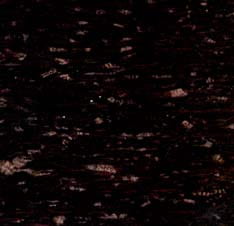 The Berlin and Utley rhyolite are considered the same rock although they are separated by almost 10 miles. The most extensive work in the area, starting in 1886, was done by the E.J. Nelson Granite Co. The E.J. Granite co controlled thirty acres arou nd their mine, in this area they dug two major openings. Both of the openings were over 150 feet long 60 feet wide and 50 feet deep. The rock that they were pulling out of the holes were never over 18ft. by 4ft. in size. The rhyolite from this quarry is a compact, dense rock. The color is a grey black but gets a light pink tint by the feldspars that formed with the rock. There is one good side to polish the others don’t shine with the same luster as the face (run, head surfaces). The rock turned out to be a great stone for monumental purposes. In fact there are still head stones made of Berlin Rhyolite that were polished over a century ago that still maintain the same high gloss they did when they were new. Berlin Rhyolite is also used extensively for bui lding purposes The science hall at UW Madison was created in part from this stone, as was the Bartlett Building in Chicago. The stone was also used for paving blocks in the Milwaukee and Chicago area. Hundred of thousands of the paving blocks are laid on these streets. Cross walks and curbing have also been cut and sold in large quantities to the surrounding cities
The Berlin and Utley rhyolite are considered the same rock although they are separated by almost 10 miles. The most extensive work in the area, starting in 1886, was done by the E.J. Nelson Granite Co. The E.J. Granite co controlled thirty acres arou nd their mine, in this area they dug two major openings. Both of the openings were over 150 feet long 60 feet wide and 50 feet deep. The rock that they were pulling out of the holes were never over 18ft. by 4ft. in size. The rhyolite from this quarry is a compact, dense rock. The color is a grey black but gets a light pink tint by the feldspars that formed with the rock. There is one good side to polish the others don’t shine with the same luster as the face (run, head surfaces). The rock turned out to be a great stone for monumental purposes. In fact there are still head stones made of Berlin Rhyolite that were polished over a century ago that still maintain the same high gloss they did when they were new. Berlin Rhyolite is also used extensively for bui lding purposes The science hall at UW Madison was created in part from this stone, as was the Bartlett Building in Chicago. The stone was also used for paving blocks in the Milwaukee and Chicago area. Hundred of thousands of the paving blocks are laid on these streets. Cross walks and curbing have also been cut and sold in large quantities to the surrounding cities
